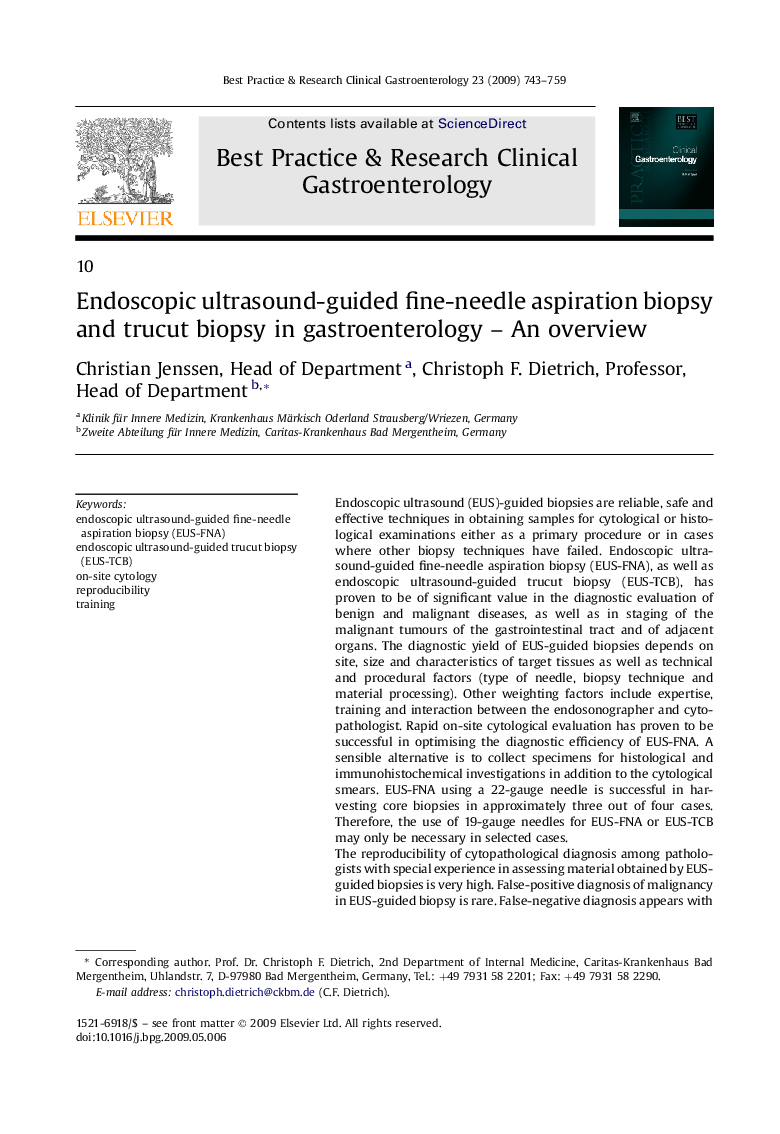| Article ID | Journal | Published Year | Pages | File Type |
|---|---|---|---|---|
| 3254575 | Best Practice & Research Clinical Gastroenterology | 2009 | 17 Pages |
Endoscopic ultrasound (EUS)-guided biopsies are reliable, safe and effective techniques in obtaining samples for cytological or histological examinations either as a primary procedure or in cases where other biopsy techniques have failed. Endoscopic ultrasound-guided fine-needle aspiration biopsy (EUS-FNA), as well as endoscopic ultrasound-guided trucut biopsy (EUS-TCB), has proven to be of significant value in the diagnostic evaluation of benign and malignant diseases, as well as in staging of the malignant tumours of the gastrointestinal tract and of adjacent organs. The diagnostic yield of EUS-guided biopsies depends on site, size and characteristics of target tissues as well as technical and procedural factors (type of needle, biopsy technique and material processing). Other weighting factors include expertise, training and interaction between the endosonographer and cytopathologist. Rapid on-site cytological evaluation has proven to be successful in optimising the diagnostic efficiency of EUS-FNA. A sensible alternative is to collect specimens for histological and immunohistochemical investigations in addition to the cytological smears. EUS-FNA using a 22-gauge needle is successful in harvesting core biopsies in approximately three out of four cases. Therefore, the use of 19-gauge needles for EUS-FNA or EUS-TCB may only be necessary in selected cases.The reproducibility of cytopathological diagnosis among pathologists with special experience in assessing material obtained by EUS-guided biopsies is very high. False-positive diagnosis of malignancy in EUS-guided biopsy is rare. False-negative diagnosis appears with variable frequency depending on the target tissue, technical factors and expertise of the endosonographer and cytopathologist. There are numerous challenges and pitfalls in the differential diagnostic classification of benign and malignant lesions. These problems are related to the characteristics of samples obtained by EUS-guided biopsy, as well as to the multiple diagnoses with similar or overlapping cytological or histological characteristics. The high prognostic and therapeutic relevance of the cytopathological diagnoses resulting from EUS-guided biopsy calls for a shared responsibility of an endosonographer and a cytopathologist.
